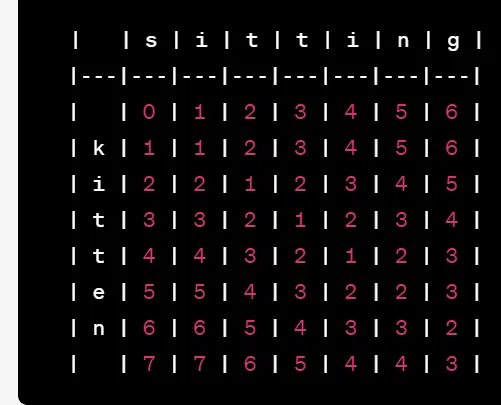In the digital age, it is important to understand the user behaviour on websites and web applications for businesses seeking to enhance user experiences and optimize their platforms. For a marketer, clickstream analysis is a crucial component of web analysis that provides how the user navigates through different web paths.
Advantages of Clickstream analysis :
- User Behavior Understanding: Clickstream analysis helps businesses gain insights into how users interact with their websites or applications. To the marketing manager, it provides a detailed view of user behavior, allowing companies to understand which pages users visit, how long they stay, and the actions they take, such as clicks, searches, and form submissions.
- Website Optimization: By analyzing clickstream data, organizations can identify bottlenecks, drop-off points, and areas of improvement on their websites. This information is invaluable for optimizing the user experience and increasing conversion rates.
- Marketing Effectiveness: Marketers use clickstream data to measure the effectiveness of online marketing campaigns. By tracking how users arrive at a website and their subsequent actions, they can assess the ROI of different marketing channels and strategies.
During my internship project, the marketing analytics project had the following objectives:
Objectives:
- Figuring out the behavior or visit pattern of a particular user.
- Predicting which page the user might visit with a probability score.
- Identify whether the user will follow a call to action or not.
- Targeting the ‘non call to action’ user and turning her into a ‘call to action’ one.
We researched and explored many AI algorithms for the objectives stated above. Here I am discussing 2 methods (AI algorithms) that I implemented to understand the user journey and convert a user to a buyer. First, I would discuss about the LSTM Model and why I used it in Clickstream Analysis in my project. And then I will discuss about Levenshtein distance and its usage.
WHY LSTM:
LSTM (Long Short-Term Memory) models are a type of recurrent neural network (RNN) designed to process sequences of data, making them particularly well-suited for time-series data like clickstream records. The significance of this deep learning model in clickstream analysis lies in their ability to capture and learn from complex temporal dependencies and patterns in user interactions. This makes LSTM ideal AI algorithm for tasks such as predicting user behavior, detecting anomalies, and personalizing content recommendations.

In our internship project we have taken every input sequence length as 8. For each and every sequence we have successfully predicted the next 3clicks (this means after 5th click which page the user will visit next) with the help of LSTM AI algorithm.
Advantages of using LSTM:
- One key advantage of LSTM models is their ability to handle sequences of varying lengths. In clickstream analysis, user sessions can be of different duration, making traditional models less effective. LSTM, however, excel at modeling sequences of unequal lengths, enabling accurate analysis of user sessions and behavior.
- Moreover, LSTM can adapt and update their understanding of user behavior over time, thanks to their long short-term memory capabilities. This adaptability is invaluable in dynamic environments, where user preferences and navigation patterns evolve continuously. By leveraging LSTM models, businesses can keep pace with changing trends and tailor their digital offerings using AI algorithm accordingly.
The Levenshtein distance
The Levenshtein distance, also known as the edit distance, is a measure of the similarity between two strings or sequences. It quantifies the minimum number of single-character edits (insertions, deletions, or substitutions) required to transform one string into another. The Levenshtein distance is widely used in various applications, including spell-checking, DNA sequence analysis, and natural language processing.

The Levenshtein distance between “kitten” and “sitting” is 3, which means it takes three operations to transform one string into the other (e.g., “kitten” to “sitten” to “sittin” to “sitting”).
We used it to find the minimum distance between a ‘non call to action’ sequence and a ‘call to action’ sequence. Lower distance means it will take a few steps to transform the ‘non call to action’ sequence into ‘call to action’ one. This was our target.
The use cases of Levenshtein distance:
- Content Recommendations: By measuring the similarity of user sessions and their navigational paths, businesses can employ Levenshtein Distance to offer personalized content recommendations. This enhances user engagement and satisfaction.
- Anomaly Detection: Deviations from typical user behavior may indicate security breaches or system malfunctions. Levenshtein Distance can be employed to detect anomalous patterns in clickstream data, providing an extra layer of security and reliability.
Throughout my internship project, diving into the world of AI algorithms – learning, researching, and implementing them in a real-world project – proved to be an exhilarating experience. I implemented the project in python and followed data science project lifecycle which included various stages from data processing to data engineering, AI modeling and reporting. Beyond the technical skills gained, this project provided me invaluable insights into the entire data science project lifecycle and the collaborative nature of teamwork.
About the author:
This blog post is a contribution from Rhitaban Nag, who completed his Data Science Training at Data Brio Academy and learnt about various AI algorithms. In this article, Rhitaban dives into his internship project at Business Brio, an award-winning data science and AI company, where he implemented clickstream analysis in marketing using AI algorithms.
